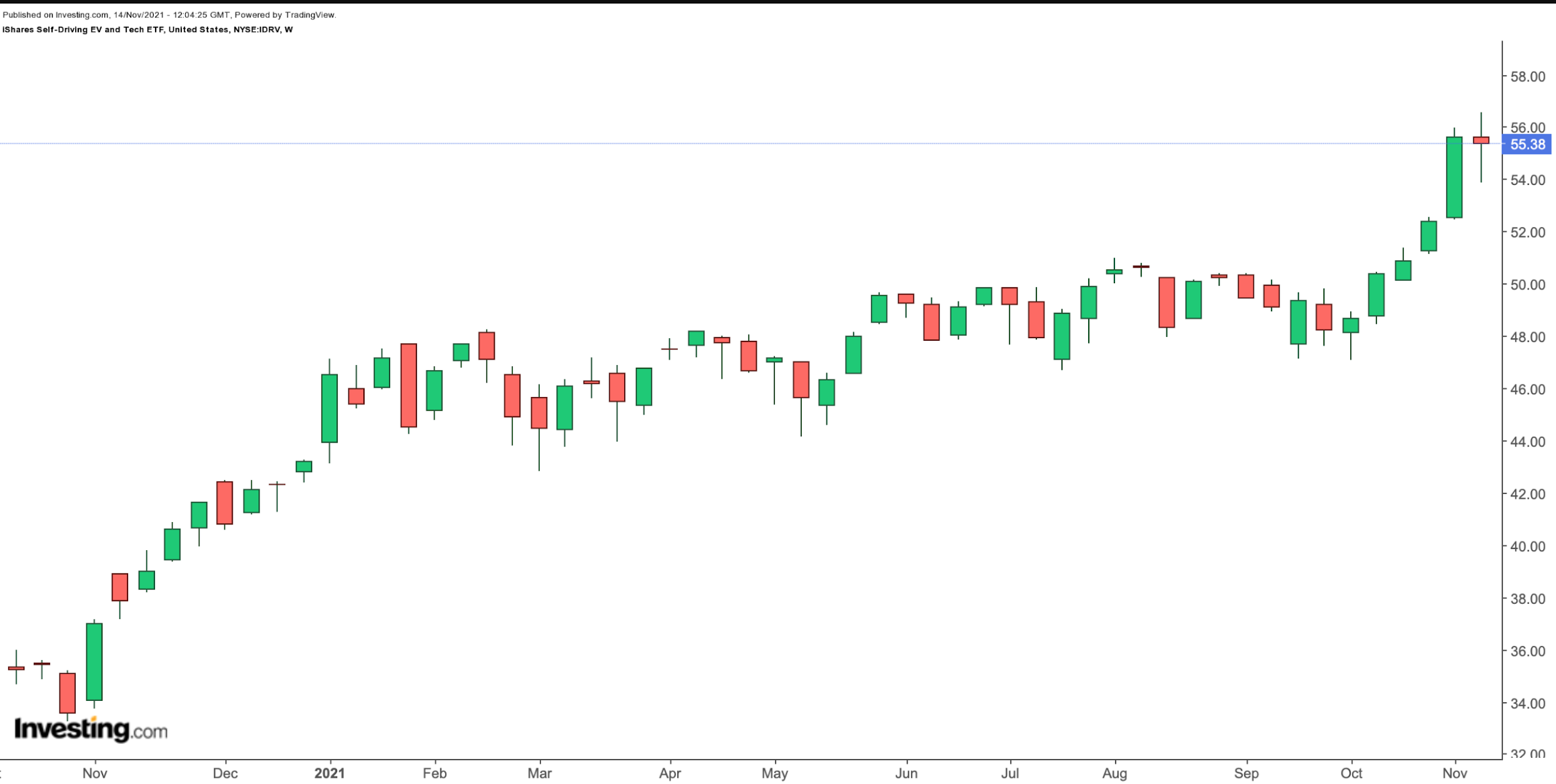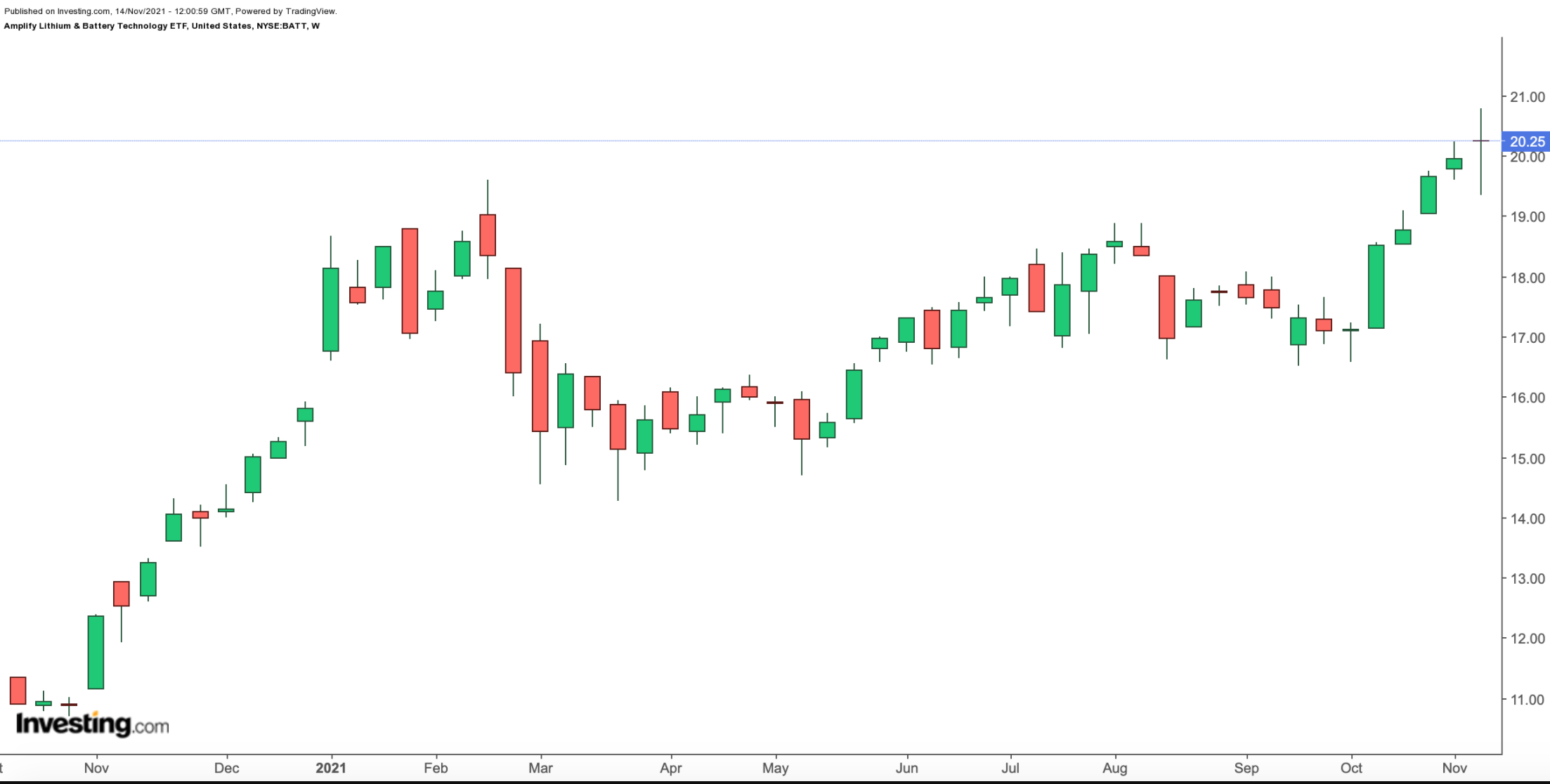Rivian Automotive (NASDAQ:RIVN), the electric vehicle (EV) company backed by Amazon (NASDAQ:AMZN), made its public debut on Nov. 10, when stock started trading at $106.75. Shares are now around $130. The pre-revenue EV maker has a market capitalization (cap) of over $110 billion.
The company announced the production of its R1T EV truck in September. In a recent filing with the US Securities and Exchange Commission (SEC), management cited:
“Based on our current production forecast, we expect to fill our preorder backlog of approximately 55,400 R1 vehicles by the end of 2023. Our manufacturing facility in Normal, Illinois (the “Normal Factory”) is currently equipped to produce up to 150,000 vehicles annually… We produced 104 R1T vehicles during the last week of October 2021.”
The widely-followed debut of Rivian put the industry as well as other EV makers, autonomous vehicle technology and battery stocks in the limelight. Recent metrics highlight that the global EV market could grow from around $250 billion in 2020 to around $1.3 trillion in 2028. Industry experts suggest an average compound annual growth rate (CAGR) of well over 25% during the decade.
Therefore, today we look at two exchange-traded funds (ETFs) that might appeal to a range of investors interested in the transition to alternative energy sources as well as the technology behind EVs.
1. iShares Self-Driving EV and Tech ETF
- Current Price: $55.38
- 52-week Range: $37.30 - $56.55
- Dividend Yield: 0.58%
- Expense Ratio: 0.47%
The iShares Self-Driving EV and Tech ETF (NYSE:IDRV) invests in global businesses along the EV and autonomous driving technology value chain. The fund started trading in April 2019.

IDRV which has 99 holdings, tracks NYSE FactSet Global Autonomous Driving and Electric Vehicle Index. The top 10 names make up about 45% of net assets of $536.5 million. Consumer discretionary names have the highest slice with 42.02%, followed by information technology (40.71%) and industrial (6.51%) stocks.
Leading stocks on the roster include the chip heavyweights Advanced Micro Devices (NASDAQ:AMD), NVIDIA (NASDAQ:NVDA) and Qualcomm (NASDAQ:QCOM); EV darling Tesla (NASDAQ:TSLA), as well as tech giants Alphabet (NASDAQ:GOOGL) and Apple (NASDAQ:AAPL).
The ETF returned 28.2% in 2021 and 47.9% in the past year. IDRV hit a record high in recent days. P/E and P/B ratios stand at 28.67 and 3.05. A potential decline toward the $53.5 level would improve the margin of safety.
2. Amplify Lithium & Battery Technology ETF
- Current Price: $20.25
- 52-week range: $12.21 - $20.78
- Dividend Yield: 0.17%
- Expense ratio: 0.59%
The increasing electrification of mobility and transportation brings us to companies that mainly lead the way in lithium battery technology. Most EVs rely on “lithium-ions cells, in which positively charged lithium ions are carried by a liquid electrolyte from the anode to the cathode through a separator.”
Our second fund, the Amplify Lithium & Battery Technology ETF (NYSE:BATT), gives access to firms that offer battery storage solutions, specialize in battery metals or materials, as well as EVs. It started trading in June 2018 and net assets stand around $258.6 million.

BATT, which has 85 holdings, tracks the returns of the EQM Lithium & Battery Technology Index. The top 10 names make up about 38% of the fund.
Close to a third of the companies come from China. Next in line are those from the US (20.51%), Australia (12.10%), South Korea (8.86%), Japan (5.93%) and others. In terms of sectors, we see metals & mining (32.8%) followed by automobiles & components (20.7%) and electrical equipment and utilities (17.9%).
Chinese battery manufacturer Contemporary Amperex Technology (SZ:300750); mining giant BHP Group (NYSE:BHP); Roblox (NYSE:RBLX), Chinese manufacturing giant BYD (OTC:BYDDY), whose EV operations are growing; and commodity giant Glencore (LON:GLEN) (OTC:GLNCY) are among the leading names in the ETF.
Year-to-date, BATT returned 28.1% and saw a record high on Nov.9. It is also up 63.5% in the past 52 weeks. We like the fund’s diversity. Buy-and-hold investors could consider buying the dips.
